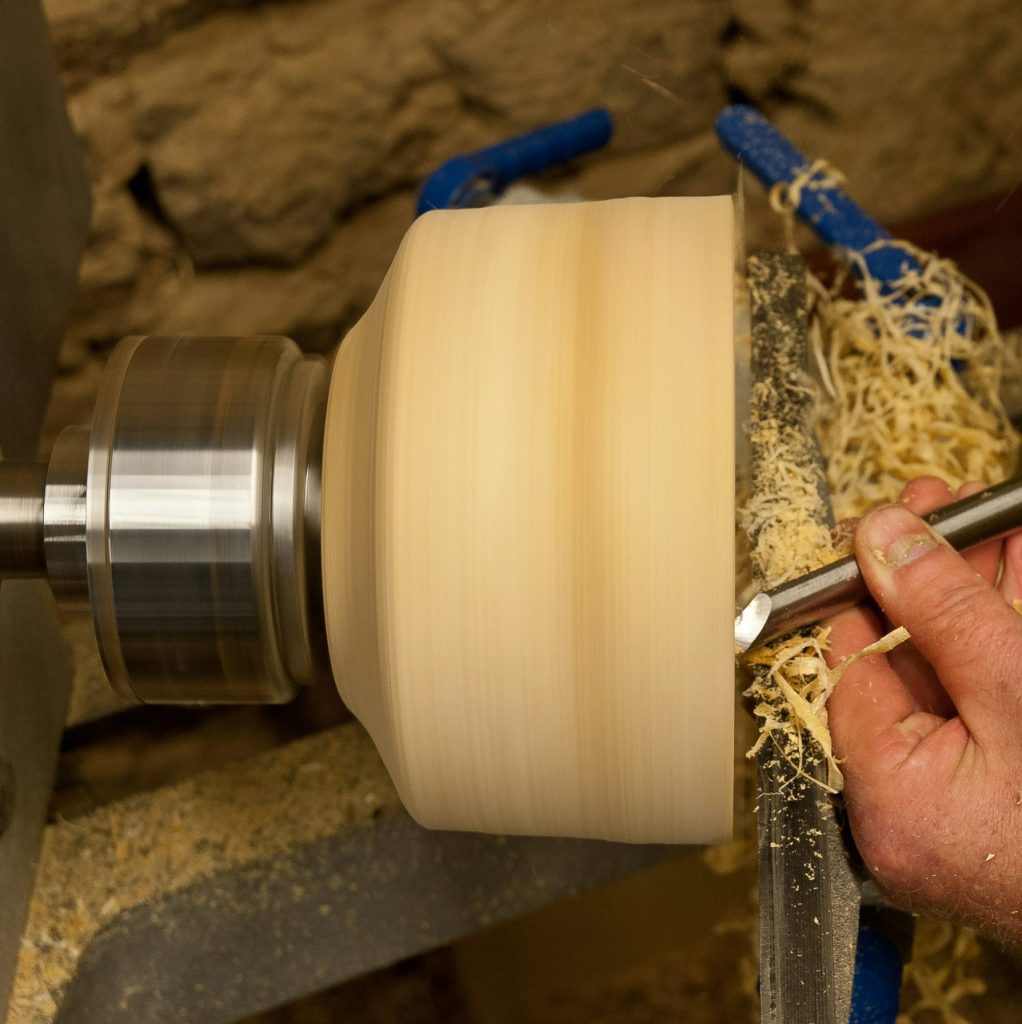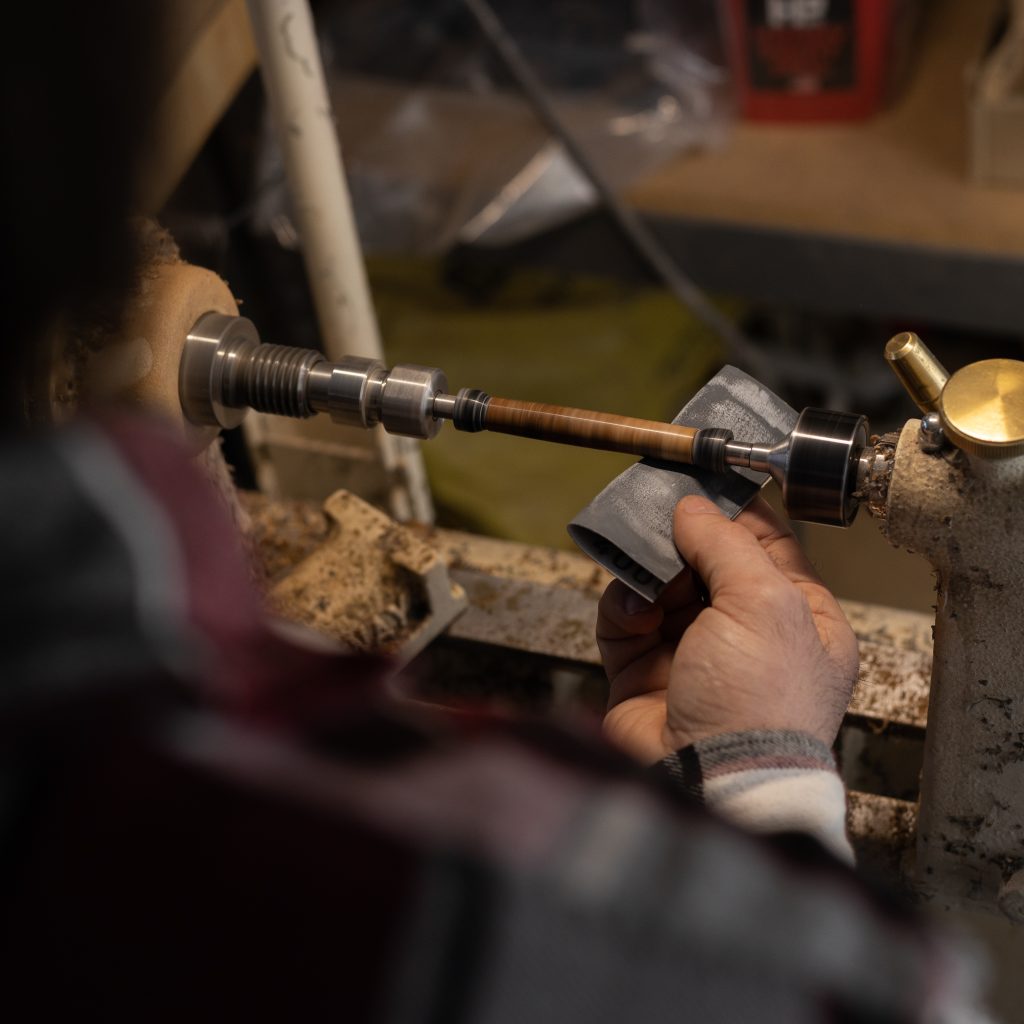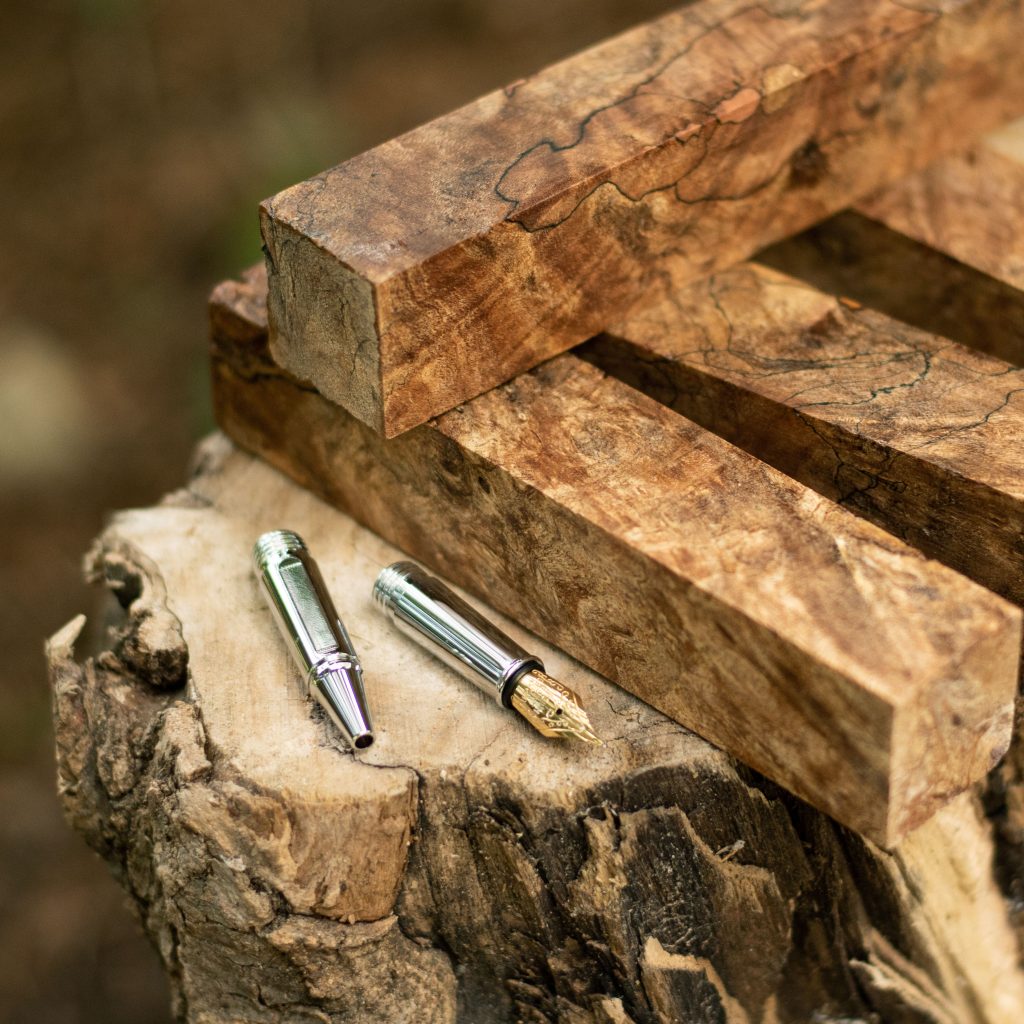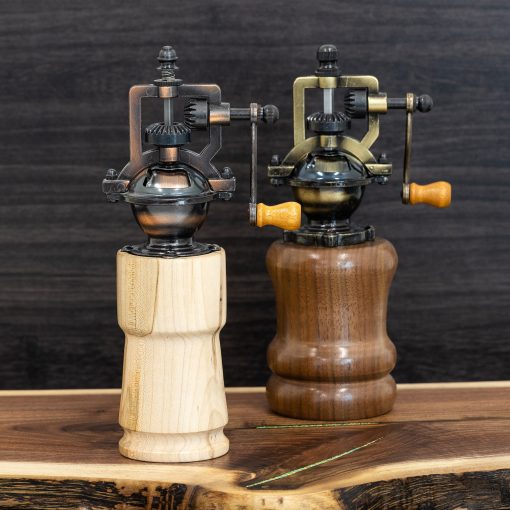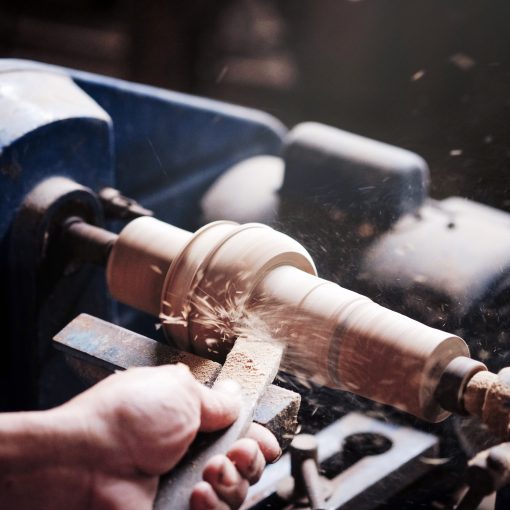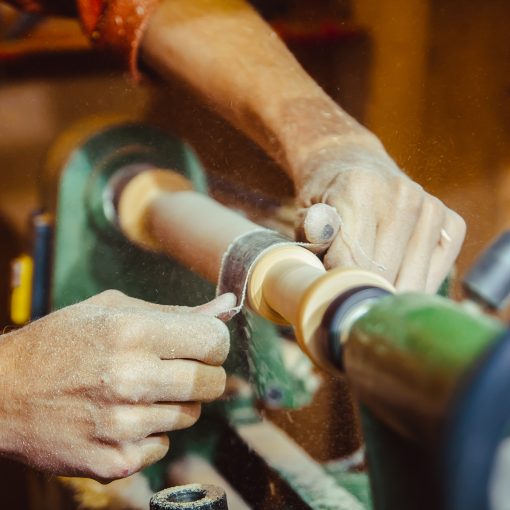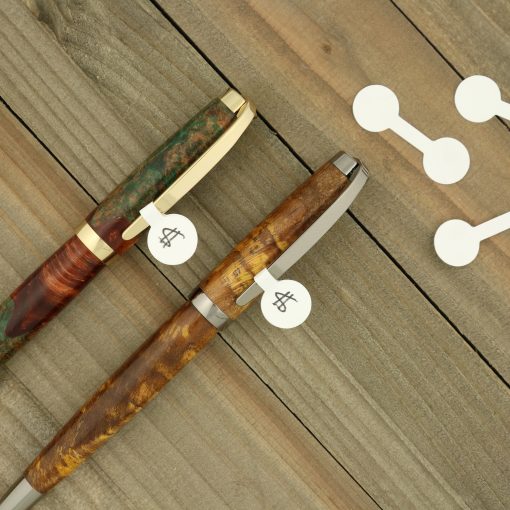As soon as you start woodturning, you quickly develop an appreciation for unusual wood with special features such as spalting, curl and burl. You’ll also notice that these unique wood types often have a slightly higher price tag. This is because they’re a little harder to come by than usual. The details that make high-figure wood special are created in nature and can’t be rushed or duplicated. Nature provides on its own terms! Learn how to identify these specialty woods and turn them on your lathe to create bespoke custom pens, wooden bowls and other woodturning projects.
What causes spalting in wooden pen blanks?
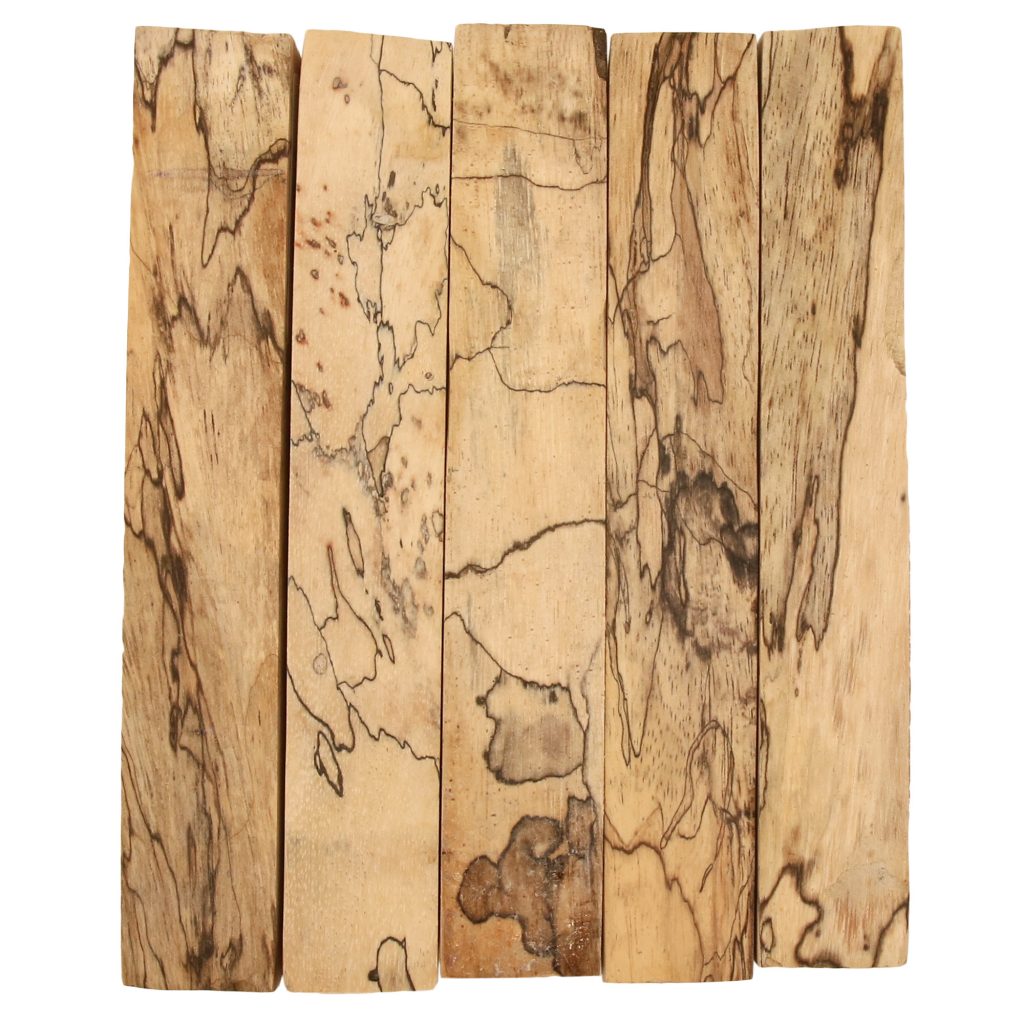
Spalted wood has thin, dark vein-like lines squiggling through it. This interesting feature is caused by fungi growing on the tree. Any kind of wood can become spalted over time, especially soft wood. The porous sapwood of Maple that grows in warm, wet places is especially susceptible to fungi. Most spalting occurs in sapwood, which is weaker and more brittle than heartwood. Tropical and hardwoods are less likely to develop spalting. When turning spalted sapwood, take small, gentle cuts and use a very sharp chisel to prevent tear-out.
Tip: When finishing soft spalted wood, oil finishes may absorb unevenly. Try lacquer, shellac or polyurethane.
Putting the “worm” in Wormy Maple

Wormy Maple, also known as Ambrosia Maple, is characterized by flowing black, grey or dark brown streaks that resemble undulating worms. These streaks are not formed by worms at all, but by Ambrosia beetles. The beetles burrow into maple trees, forming grooves in the wood. Their larva, combined with fungus, create the distinct streaks.
Tip: Wormy woods sometimes have pinholes throughout. Fill these with CA glue and coloured mica powder for a distinct feature.
Turning birdseye maple wood on a lathe
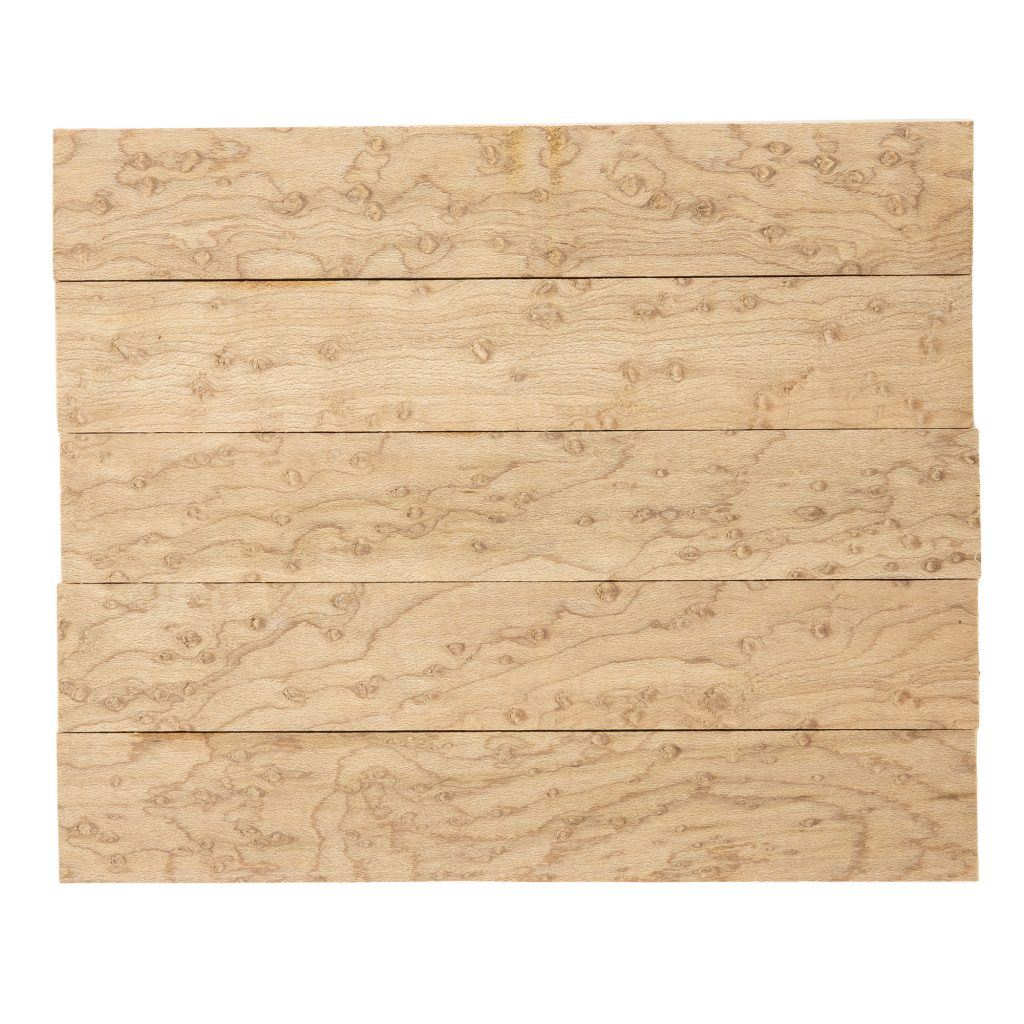
Birdseye, not to be confused with Buckeye, appears in wood as shimmering little dots that resemble a bird’s eyes. Birdseye figuring is most commonly found in Maple trees, but can show up on other kinds of wood too. The “eyes” can be caused by genetics or by buds unsuccessfully trying to grow on the tree in stressful conditions. These mesmerizing little details are what make wood turnings extra special, especially when they’re dyed.
Tip: Finish your birdseye maple lathe projects with natural wax or oil to really enhance their beauty.
Choosing the right curly maple for woodturning
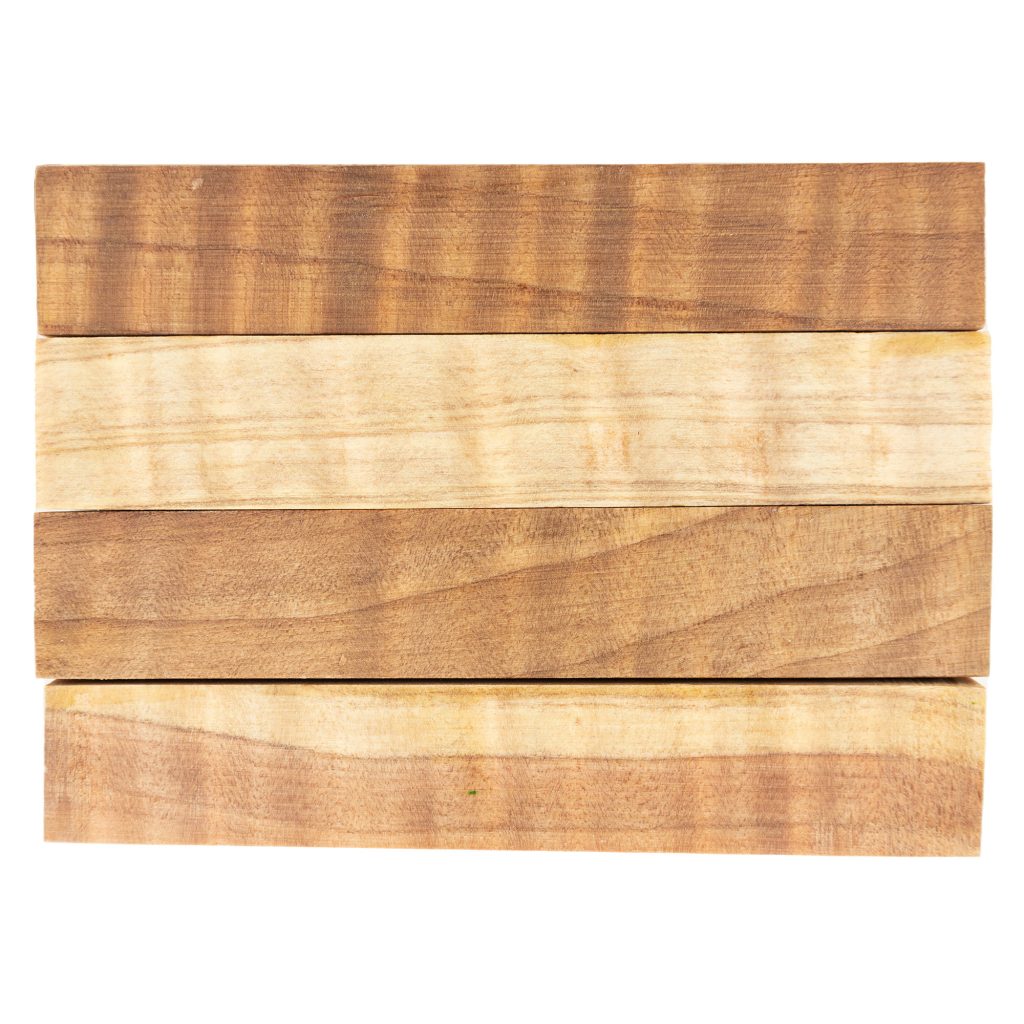
The wavy, rippled grain of Curly Maple resembles tiger stripes. The curling effects in the wood grain come from irregular cell growth, caused by stress. It can also be caused by genetics or sometimes when a tree’s branches grow in a compressed, small space. Curly wood has a mesmerizing holographic appearance that is prized in woodturning.
Tip: Curly wood can be stabilized and dyed bright colours, which makes especially eye-catching wood turnings.
Making custom pens with burl

Burl wood has twisted, intertwined grain patterns that vary from piece to piece. Every burl is absolutely unique in shape, size, colour and figuring, which means all your custom burl pens will be one-of-a-kind too. Burls occur due to many different kinds of stress on a tree, such as fungus, infections, insect infestation or damage from extreme weather.
Tip: Burl can be punky and unpredictable when turning. If you encounter a really soft spot, apply a little thin CA glue to it to stabilize it.
What causes “mottled” wood?
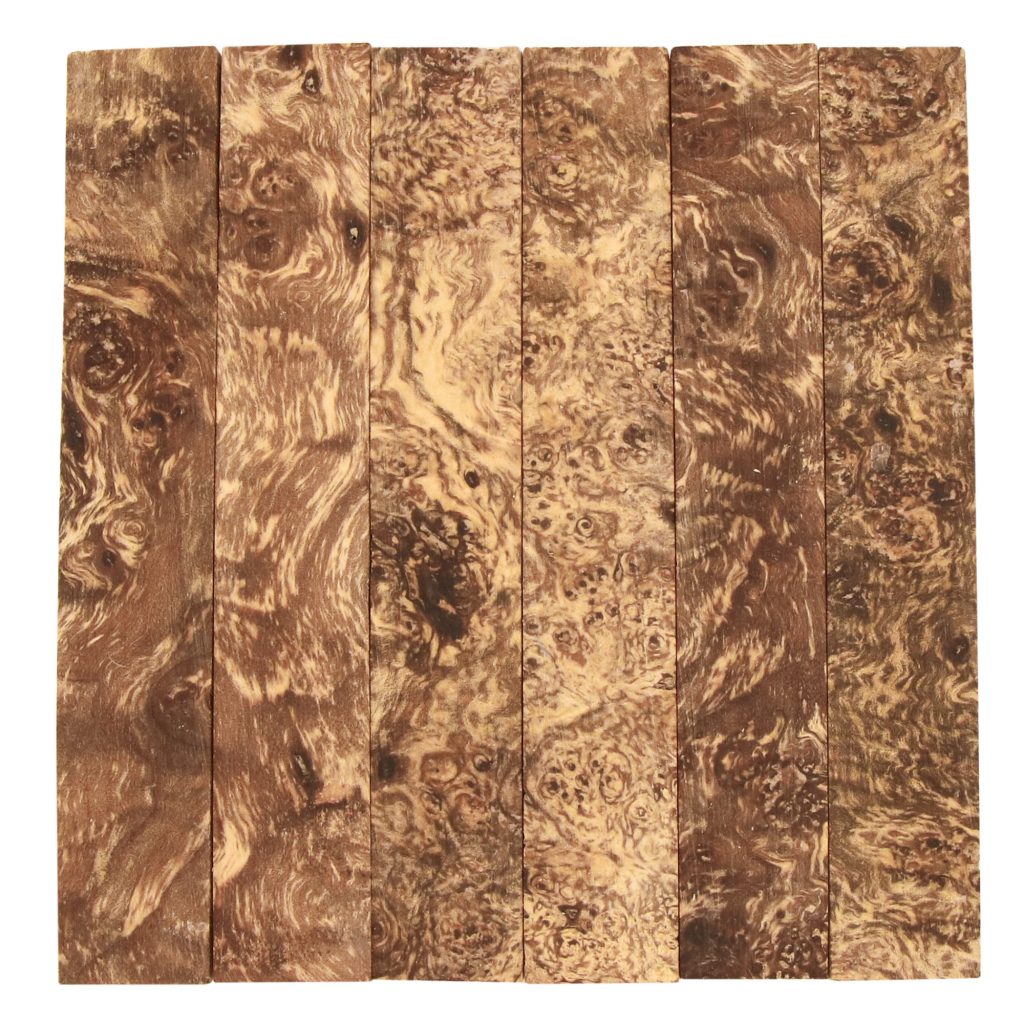
Mottled wood can have blotches of varying colours and figure. It can look wrinkled or like the pattern is “broken” due to its blotchy look. Mottled wood occurs when the grain is twisted or interwoven where a branch meets the trunk, or from stressful growing conditions. Any type of tree can have a twisted spot in the grain, but Black Walnut, some Maple and Sapele are especially prone to it. Some mottling is called “bee’s wing” mottle, which is a small, tight crisscrossing of grain that resembles the look of insect wings.
High-figure wood for turning
We love us some figured wood here at William Wood-Write! Sometimes high-figure wood can be tricky to turn, so we stabilize a lot of it ourselves in our woodshop in Ontario, Canada (and dye it different colours, too!). If you’re looking for a specific or unusual wood for pen turning or other lathe projects, drop us a line or explore our selection online. Be sure to check back often because we’re always getting new and exciting woodturning products!
